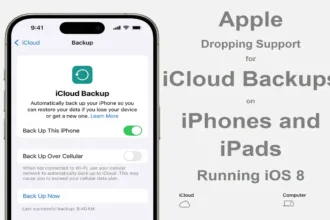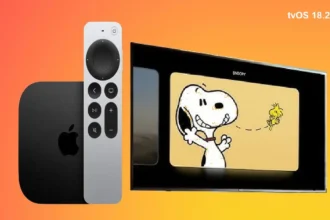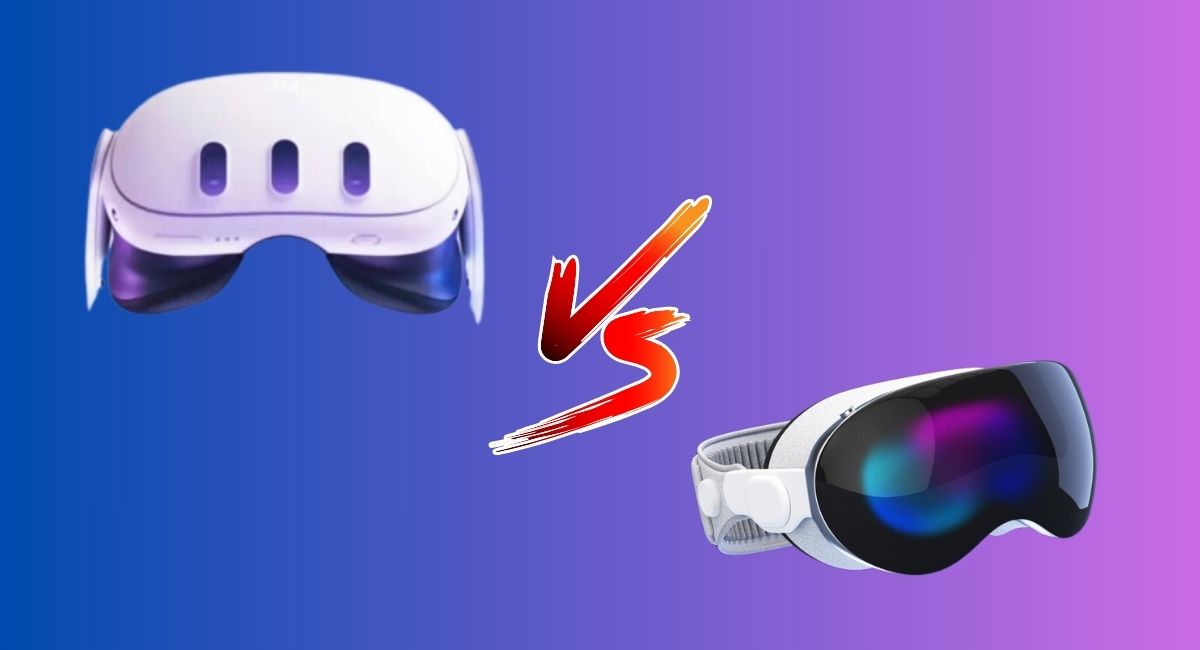The Meta Quest 3 and Apple Vision Pro represent two of the most advanced consumer virtual reality and augmented reality headsets available today. However, they have key differences when it comes to display resolution and quality.
Display Resolution
The Meta Quest 3 features dual LCD displays with a resolution of 2064 x 2208 pixels per eye, adding up to around 4.5 million pixels per eye or 9 million pixels total.
In comparison, the Apple Vision Pro uses custom micro-OLED displays with an estimated resolution of 3660 x 3142 pixels per eye, totaling around 11.5 million pixels per eye or 23 million pixels total.
This means the Vision Pro has over 2.5 times the number of pixels per eye as the Quest 3. The much higher resolution allows the Vision Pro to render finer details and text compared to the Quest 3.
Read: Is Apple Vision Pro Worth It?
Display Technology
The Quest 3 uses LCD panels with mini-LED backlights, while the Vision Pro utilizes cutting-edge micro-OLED technology.
Micro-OLED offers higher pixel density, allowing more pixels to be packed into a compact area. Each pixel on the Vision Pro measures just 7.5 micrometers wide, similar to the diameter of a human red blood cell.
Micro-OLED also enables better contrast ratios and viewing angles compared to LCD. Thus, the Vision Pro should deliver richer, more vibrant colors and deep blacks.
Field of View
The Quest 3 provides a 110° horizontal and 96° vertical field of view (FOV). Apple has not officially disclosed the FOV for the Vision Pro, but estimates place it around 100° diagonally.
So, the Quest 3 likely offers a somewhat wider overall field of view, allowing more of the virtual environment to be seen at once.
Refresh Rate
The Meta Quest 3 supports refresh rates up to 120Hz, while the Vision Pro maxes out at 100Hz. The higher 120Hz refresh rate enables smoother motion and reduced blurring during fast headset or scene movements.
Hence, the Quest 3 has the edge for gaming and experiences requiring quick reactions and tracking. But the Vision Pro’s 100Hz is still decent for most applications.
Pixel Density
While the Quest 3 resolution seems high at first glance, the Vision Pro packs far more pixels into roughly the same display area.
The Vision Pro achieves a remarkable pixel density over 3300 PPI (pixels per inch), whereas the Quest 3 only manages around 1218 PPI.
Higher pixel density translates to sharper clarity because the individual pixels become smaller and less discernible to the human eye.
Image Quality
The combination of much higher resolution, pixel density, micro-OLED technology, and dedicated image processing gives the Vision Pro a commanding lead in terms of potential image quality.
The Quest 3 will seem perfectly fine on its own. But when viewed side-by-side with the Vision Pro, the difference in fine details and text sharpness becomes very apparent.
Final Thoughts
The Apple Vision Pro clearly comes out ahead in terms of display specifications and technology.
It offers over 2.5x higher resolution per eye, greater pixel density, richer micro-OLED panels, and dedicated graphics processing. This adds up to a vastly superior image in terms of clarity, details, colors and contrast.
The Quest 3 still provides a solid visual experience, especially for its much lower $500 price point. But the Vision Pro represents a true next-generation leap in AR/VR visual fidelity. Its cutting-edge display pushes the limits of what’s currently possible in a consumer device.
So, while the Quest 3 has the edge in field of view and refresh rate, the Vision Pro easily wins out in the most crucial category – display and image quality. We will have to wait and see if this huge technological lead translates into a proportionally better user experience.






